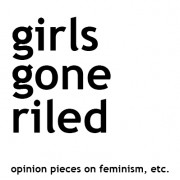Why posting images of people eating (or naming and shaming those that do) has little to do with feminism
Two Facebook groups have been rocking the internet-boat particularly violently over the past couple of weeks. The first, Women who eat on tubes, encourages members to take pictures of women eating on the tube and post them on the group with three wittily-acronymed pieces of information – Time, food, and Location.


On the second, Men who Post on “Women who Eat on Tubes“, members post a photo of a man who posted on WWEOT and write a satirical response to their original post or a mocking commentary on their appearance, name or clothing. One member posted a picture of a boy named Stephane, commenting “The brave little lad has not allowed the fact that his parents can’t spell to defer him from posting this unbelieveable guff on WWEOT…”
Both groups are home to endless fighting in the comments (made doubly confusing to the casual viewer, as comments are constantly moderated, deleted and edited), much of which boils down to MWPOWWEOT types calling WWEOT types misogynistic, and WWEOT types calling MPWOWWEOT types mad feminists and bandying around the term ‘hysteria’ as though they were, in fact, a bunch of Victorians.
While the outcry against the original group (including many, many comment articles and a bizarre-sounding picnic protest in which women were… that’s right, voluntarily papped by professional photographers while eating on the tube) is unavoidably justified, woman-hating isn’t really the main issue at stake here.
Laughing at women for eating certainly has its roots in disturbing gender norms, but the wider context goes beyond these two groups. Shaming strangers is just an extension of bullying (sorry to sound like your year 5 teacher), and it taps into a deep fear that has plagued internet users since its inception – namely, the fear that, somewhere on the internet, someone is laughing at you. And that is merely an extension of a millenia-old fear that someone, somewhere, is watching you and laughing.

These groups – to which Men taking up too much space on the train (the author of which was described on Buzzfeed as a ‘clever tumblr user‘ – remarkably anodyne compared to the vitriol directed at WWEOT’s founder) and Men who eat on trains can be added – are just high-tech Burn Books, a place to bitch and laugh about people without repercussions. They’re for people who made prank calls on their house phones at sleepovers, just to make their friends or enemies feel stupid.
The punishment doled out by MWPOWWEOT to snap-happy men often does not focus on their original post – instead, it turns the men’s weapons back on themselves. The group mocks men for their hair, their vacant expressions, or the props in their pictures, deriding them for exactly the things they mocked women on the original group for in the first place.
Today, on a train platform, bag of popcorn in hand, I found myself reluctant to eat. When I examined my thoughts, they didn’t centre around people judging me as a woman for eating in public – they centered on the fear that a stranger would try and take a picture of me to make 22,000 men and women laugh at my expense. If I were a man sitting on a too-small train seat, I imagine I would have felt a similar fear.
So while those posting on either side of the debate may, as a sideline, be feminist or misogynist, they’re mostly just mean. Imagine what Regina George would have done with an iPhone – post unflattering pictures of classmates on public transport, presumably.























